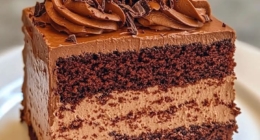The Canon EOS R8 is a digital camera that offers high-level quality and performance at an affordable price. It features a 30.3 megapixel full-frame CMOS sensor, a DIGIC 8 image processor, and a 45-point autofocus system. It also has an ISO range of 100-40,000, dual-pixel autofocus, and 4K video recording. In addition, it has a 3.2-inch touchscreen LCD, dual SD card slots, and wireless connectivity. With its great features, the Canon EOS R8 is a great choice for photographers who want a quality camera at a friendly price.
Our full review of the Canon EOS R6 II is just here, and now a more affordable camera that sits underneath and has many of the same features has joined the fray: the Canon EOS R8, which could improve the performance we should expect from the The best mirrorless cameras for beginners.
While the new full-frame EOS R8 delivers much of the mid-range performance EOS R6 IIit has an entry-level body and endurance similar to that EOS RP. It’s priced accordingly, sitting squarely in the middle of the price range between these two cameras to deliver yet another full-frame mirrorless option from Canon in an ever-expanding roster.
We will break down the key differences between the EOS R8 and EOS R6 II separately in our upcoming Canon EOS R8 vs EOS R6 II article. This hands-on reflects our first impressions based on the short time we’ve had with the R8 prior to its launch – we’ll bring you our full review after we’ve had more time to test it thoroughly.
(Image credit: Future)
Canon EOS R8: release date and price
- £1,699.99 / $1,499 / AU$3,000 (approx) for the body only
- £1,899.99 / $1,699 / AU$3,300 (approx) with RF 24-50mm F4.5-6.3
- Should hit the shelves in March
The Canon EOS R8 was announced on 8 February 2023 and is set to hit shelves in March priced at £1,699.99 / $1,499 / AU$3,000 (approx) for the body only.
On the same day, the RF 24-50mm F4.5-6.3 folding lens was launched, priced at £379.99 / $350 (approx) / AU$660 (approx). The new camera and lens are available as a kit for £1,899.99 / $1,699 / AU$3,300 (approx), which is a decent saving for a super compact and lightweight full-frame pairing.
(Image credit: Future)
This is the sixth model number in Canon’s full-frame mirrorless series (EOS R3, EOS R5/R5C, EOS R6 II, EOS R8, EOS RP and EOS R), and the EOS R8 breaks new ground with no direct competition from other brands; Its features, design, and price position it between entry-level and mid-range alternatives.
For around the same money, the Canon EOS R7 is another option. It’s Canon’s flagship crop-sensor mirrorless (APS-C) camera with specs that are even easier to read on paper, with a 32.5MP resolution and serious action photography capabilities. Just like the choice of the product names, the winner is not known immediately.
Canon EOS R8: Design
- Canon’s lightest full-frame mirrorless camera
- Simplified control considering the features offered
- An excellent combination with the new 24-50mm kit lens
The EOS R8 shares virtually the same body as the EOS RP, Canon’s smallest full-frame mirrorless camera. But it goes one step further, shedding around 24g to become the lightest available at 461g with memory card and battery in place.
Despite its small stature, the EOS R8 has a decent EVF with a 120fps refresh rate and the OVF (optical viewfinder) simulation mode, first seen in the EOS R3, intended to allay the fears of those upgrading from a DSLR to mirrorless transfer. The simulation uses HDR to reveal detail in shadow areas that you might see more clearly through an optical viewfinder.
There’s also a responsive, vari-angle touchscreen, a feature demanded by hybrid shooters these days that makes the camera a really viable option for vloggers and other content creators.
Image 1 of 5
(Credit: Future)(Credit: Future)(Credit: Future)(Credit: Future)(Credit: Future)
Given how small the camera is and how large full-frame lenses can be, there isn’t a huge range of lenses that feel comfortable when fitted to the EOS R8. The design of the EOS R8 suits small lenses better, which is why the new 24-50mm F4.5-6.3 folding kit lens makes so much sense.
The new kit lens may not excite on paper, but it goes well with the EOS R8. In fact, at less than 700g for the camera and lens pairing, it’s one of the lightest full-frame combos available. Being a ‘short’ camera, larger front-heavy lenses will pull on the wrist, so hopefully more small lenses are on the horizon.
There’s a dedicated photo/video switch, as found on the EOS R6 II, which is another nod to a hybrid future for the EOS R-System. However, the control layout is simplified in this smaller body. You don’t get a joystick, there’s a simple D-pad instead of a rear wheel, and there are fewer buttons to customize.
Some of the shooting modes – Raw Burst, for example – are buried in the main menu, a world you’ll have to get used to given how few settings there are on the camera’s exterior. Still, there’s a nifty guided user interface, and on the outside there’s room for a mic-in and headphone jack, as well as HDMI and remote ports. All in all, the EOS R8 packs a hell of a lot into an entry-level body.
Canon EOS R8: features and performance
- Some serious action photography power
- Responsive autofocus with subject tracking
- A range of high-speed burst modes
The EOS R8 is powered by the same processor and image sensor as the EOS R6 II, making it a camera that beats its weight.
Action addicts will enjoy the class-leading 40fps burst shooting with the electronic shutter, a number that is however reduced to 6fps with the electronic first curtain.
Raw Burst mode records at 30 frames per second for a single second, with 0.5 seconds of pre-shot before the shutter button is pressed, maximizing your chances of capturing fast-paced action sequences that are difficult to predict. These 30 frames are saved in a roll so you can choose the best frames to save.
Autofocus is another area that impresses. Canon has long offered excellent AF for both stills and video, and again we have Dual Pixel CMOS II AF with Tracking AF available for all modes. Just like the EOS R6 II, the EOS R8 offers a range of subject-recognition AF options for people, animals and vehicles, and thankfully has the auto-detection option to make those decisions for you.
Image 1 of 4
(Image credit: Future)(Image credit: Future)(Image credit: Future)(Image credit: Future)
With Flexible AF, the size of the AF zone can be optimally adjusted to your subject. You’ll have the confidence of being able to focus precisely in situations like portraiture when your subject doesn’t fill the frame, especially since Flexible AF can be coupled with eye tracking. Canon also claims that the autofocus is effective for sharp focus down to -6.5EV – that’s really low light.
One of the areas where the EOS R6 II excels is in superior battery life. When fully charged, the EOS R8 only offers half the number of images with a CIPA rating of around 400. There is also only one SD card slot in the EOS R8, while the EOS R6 II has two slots.
Elsewhere, the usual connectivity options are available: a multi-shoe for compatibility with a range of accessories including external flash, 2.4GHz wireless, Bluetooth 4.2 and MFI for connecting directly to an Apple device as well as Android devices .
Canon EOS R8: image and video quality
- Proven 24 MP full frame sensor
- Crisp oversampled 4K video with C Log 3 color profile
- Missing IBIS
There are no surprises when it comes to the image quality of the Canon EOS R8; After all, it uses the same 24-megapixel full-frame sensor as the EOS R6 II. With a sensitivity up to ISO 102,400, the EOS R8 is well positioned as an all-rounder and delivers sharp photos in almost all scenarios; Daylight, candlelight, wherever.
Video resolution is up to 4K/60p with no cropping, oversampling from 6K footage for sharp detail, although the EOS R6 II offers 6K video recording directly. Dial down to Full HD and 180p for some serious slow motion effects. It really is an impressive range of video modes.
(Image credit: Future)
The Canon Log 3 color profile is included – it’s arguably the most popular of Canon’s video log profiles, as it’s the most accessible and easier to classify than the flatter Canon Log 2, which offers a wider dynamic range. However, if you can get the exposure right – something made easier by using the False Color tool included here – grading C Log 3 clips is a breeze.
The EOS R8 also has other factors at play that indirectly affect image quality in certain situations. The camera doesn’t have in-body image stabilization (IBIS), so you’re more limited in terms of shutter speeds at which you can shoot handheld and still expect sharp shots.
The lack of IBIS also results in shakier handheld video clips. Electronic stabilization for video is present, but it’s not a patch on IBIS, and there’s also a small crop out of the frame.
Window light portrait taken with the new Canon EOS R8 and RF 24-50mm F4.5-6.3 lens (Image credit: Future)
Canon EOS R8 early verdict
Logical concessions given the EOS R8’s price and size include no IBIS, a slimmed-down camera body and battery life that you’d expect from an entry-level camera and which isn’t a patch for the EOS R6 II.
Appearances can be deceiving, however, and the EOS R8 packs a punch. There’s the same 24-megapixel full-frame sensor as in the EOS R6 II, 30fps raw burst mode and up to 40fps continuous shooting with the electronic shutter, complemented by the fast Dual Pixel CMOS II autofocus.
(Image credit: Future)
Video specification is comprehensive too, with 4K up to 60p oversampled from 6K and no recording limits (although the battery will say something about that).
It’s a high-performing performer, packed in a beginner-friendly shell, and at a respectable price point – the same price as the more capable crop-sensor EOS R7. Taken together, however, it’s not entirely clear who the EOS R8 is intended for. I’m sure we’ll find out over the coming months as the reactions from reviewers and users come in.
Source: www.techradar.com
Don’t miss interesting posts on Famousbio










